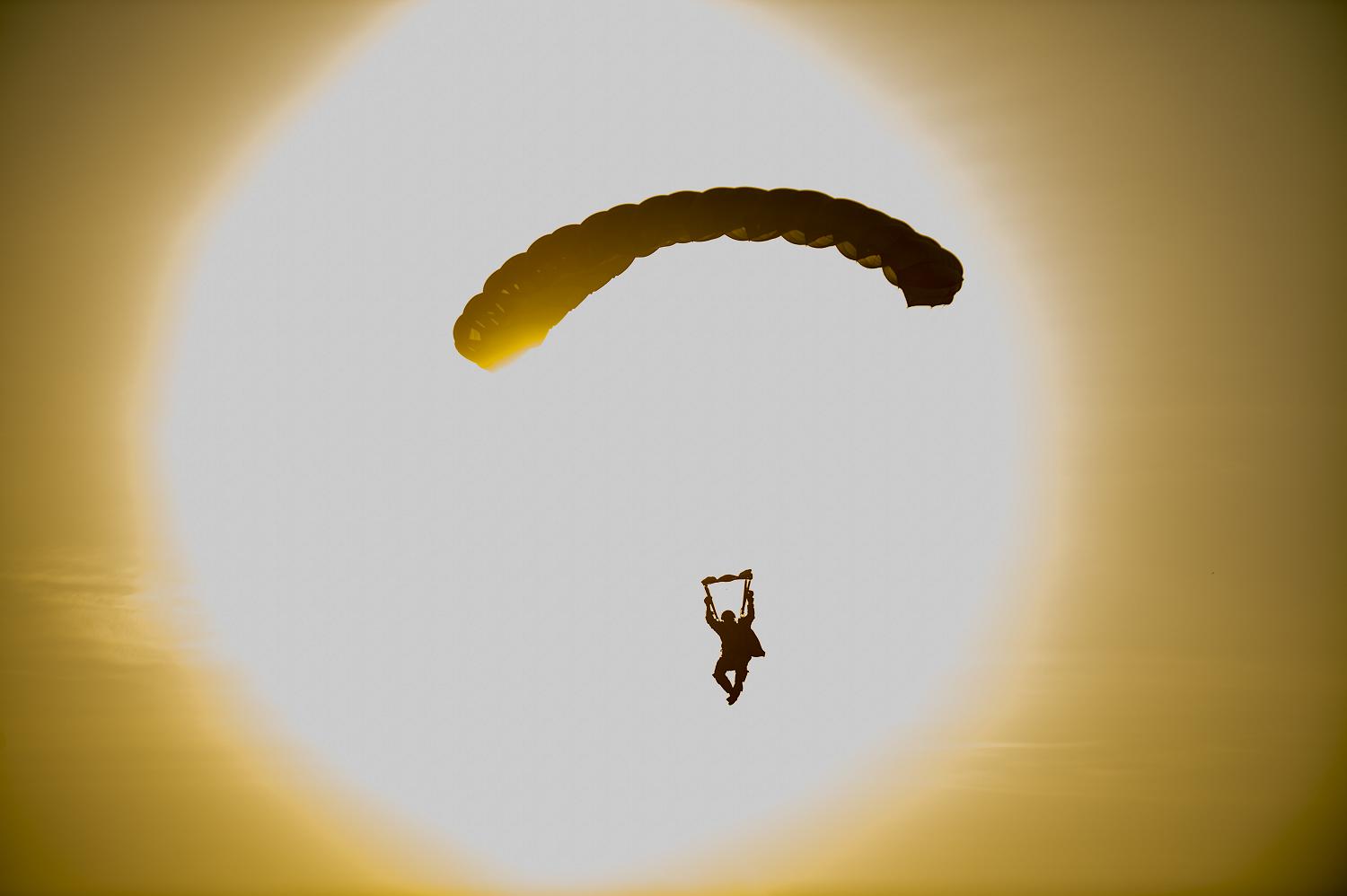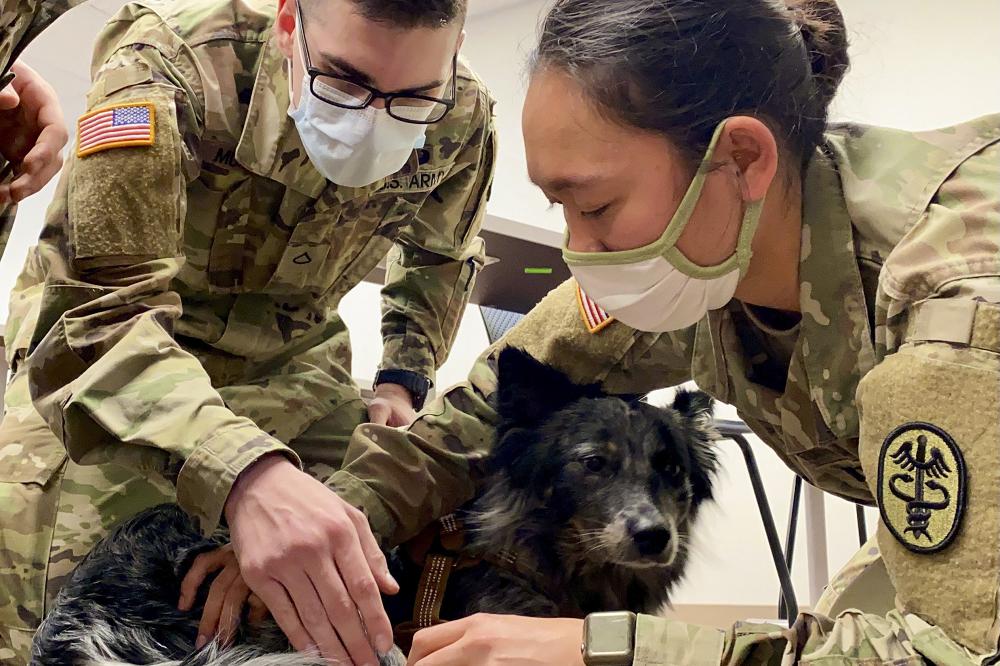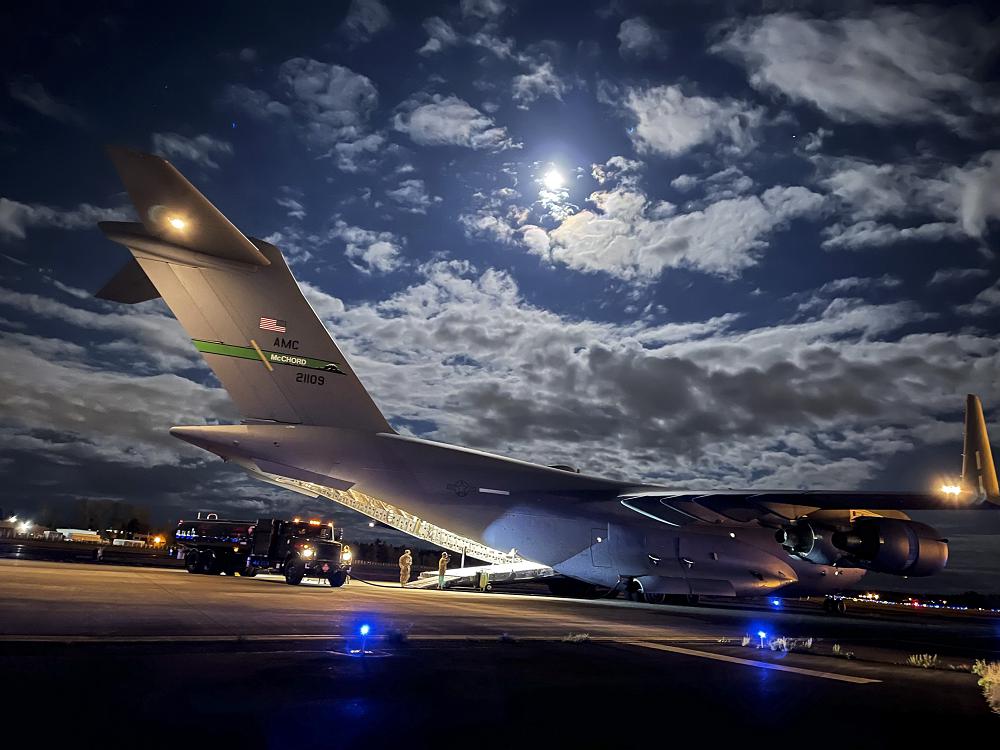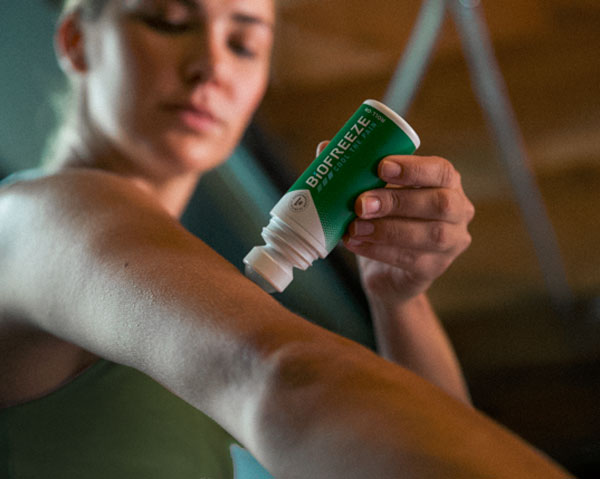- Details
- Hits: 1294
 U.S. Army Reserve and active duty Soldiers perform an airborne operations jump from UH-60 Black Hawk helicopters at Fort Bragg, North Carolina, July 17, 2020. Soldiers who are assigned to airborne units must complete a parachute jump every three months to retain jump certification. Soldiers who jumped on this day included members from the U.S. Army Civil Affairs & Psychological Operations Command (Airborne) headquarters, 824th Quartermaster Company, the 478th Civil Affairs Battalion, and 647th Quartermaster Company among other local units at Fort Bragg. (Photo by Master Sgt. Michel Sauret)
U.S. Army Reserve and active duty Soldiers perform an airborne operations jump from UH-60 Black Hawk helicopters at Fort Bragg, North Carolina, July 17, 2020. Soldiers who are assigned to airborne units must complete a parachute jump every three months to retain jump certification. Soldiers who jumped on this day included members from the U.S. Army Civil Affairs & Psychological Operations Command (Airborne) headquarters, 824th Quartermaster Company, the 478th Civil Affairs Battalion, and 647th Quartermaster Company among other local units at Fort Bragg. (Photo by Master Sgt. Michel Sauret)
Fort Bragg, North Carolina, July 2021- SupportOurTroops.Org was privileged to provide at no cost, including delivery, $196,784.64 of requested PPE to the servicemembers at Fort Bragg, North Carolina. 44,928 8 oz. plastic bottles of gel hand sanitizer were delivered by the SOT Team to the base for servicemembers. A full tractor-trailer load.
All Together Now®
- Details
- Hits: 1427

Fort Campbell, Kentucky, May 2021 - SupportOurTroops.Org was privileged to provide at no cost, including delivery, $39,534 of Biofreeze® Pain Relief Muscle Balm 3 oz gel tubes to the active duty military servicemembers at Fort Campbell, Kentucky. 3,300 tubes! America is a beautiful country full of great and generous people and companies.
The Fort Campbell Army Post straddles the border of Kentucky and Tennessee. Fort Campbell is a power projection platform and a major maneuver installation for the Army. It is also the home of the Army’s most-deployed contingency forces. Strategically located on the Kentucky/Tennessee state line, the installation has the unique ability to deploy mission-ready contingency forces by air, rail, highway and inland waterway.
Read more: $39,534 of Pain Relief Muscle Balm to Fort Campbell, Kentucky
- Details
- Hits: 1486

Joint Base Lewis-McChord, Washington, July 2021- SupportOurTroops.Org was privileged to provide at no cost, including delivery, $336,183.12 of PPE protection to the servicemembers at Joint Base Lewis-McChord, Washington. 61,152 8 oz. plastic bottles of gel hand sanitizer were delivered by the SOT Team to the base for active duty military servicemembers and families.
A full tractor-trailer load. All thanks to the American People. What a great country. The 62nd Airlift Wing's mission is to execute global airlift, prepare for Joint and Coalition Multi-Domain Operations in near-peer contested environments, and continually ensure Force Development.
Read more: $336,183.12 of PPE protection to Joint Base Lewis-McChord from SupportOurTroops.Org
- Details
- Hits: 1155

Tennessee Guard and Reserve servicemembers scored 7 pallets of Biofreeze® Pain Relief Muscle Balm 3 oz gel tubes. That’s $276,738 worth! 23,100 individual units to pull from as needed!
SupportOurTroops.Org delivered them to JFHQ, 278th ACR, 194th EN BDE, and the 230th Sustainment Brigade.
The makers of Biofreeze donated this product to Support Our Troops, Inc. in appreciation for what America’s active duty, reserve, deployed, and stationed military servicemembers do every day to keep our families safe every day. SOT handled all of the necessaries, logistics and paid the freight to deliver it to you. With everything from the all-important individual care packed to deployed troops to enterprise-levels shipments, it’s a team effort. When it comes to protecting our nation and families, we’re all in it together.
- Details
- Hits: 1176

May 2021 - The Idaho National Guard and the Veterans Pantry in Kalispell Montana scored pallets of Biofreeze® Pain Relief Muscle Balm 3 oz gel tubes. The Idaho Guard received 3 pallets with enough to serve 4,950 people @ 2 tubes each. The Idaho donation is worth $118,602. The Veterans Pantry in Kalispell Montana requested 1 pallet, which gives 1,650 vets pain relief @ 2 tubes per vet. A $39,534 value. Proof our beautiful country is full of great and generous people and companies. Veterans can learn more about alternative pain management here.
From the Donor-Manufacturer
Biofreeze® is Alternate Pain Management - Your First Line of Defense Against Musculoskeletal Pain. With the rising abuse of opioids as well as the risks and side effects of pain medication, many people are searching for non-pharmacological solutions to address their acute and chronic pain. Learn more here
- Details
- Hits: 1469

May 2021 - In addition to the first round of 14 pallets, Guard and Reserve servicemembers in Florida got hit with another 10 pallets of Biofreeze® Pain Relief Muscle Balm 3 oz gel tubes. That’s $395,340 more! 33,000 additional individual units to pull from as needed!
SupportOurTroops.Org delivered them for free to 2-54th Security Force Assistance Battalion (INF), 3-54th Security Force Assistance Squadron (CAV), 164 ADA BDE,
HQ, 83TC, HQ, 1-111 AV, HQ, 3/20 SFG, HQ, TF83 (COVID)
Read more: Big Florida Freeze Deepens as Guard and Reserve Hit with More Biofreeze!
- Huge Biofreeze Hits Florida Guard and Reserve!
- NYNG remembers sacrifice in Memorial Day ceremony
- Raised on resiliency: How military parents shape their child’s experiences
- ROCKET LIKE I TALK IT
- Military siblings find adventure in their journey
- 15 years later, pilots reunite for Mideast flight mission


